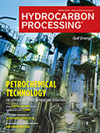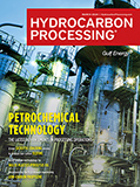Middle East
Kuwait's KPC offers high sulfur fuel oil for Feb-Apr
Kuwait Petroleum Corp has issued a semi-term tender offering high sulfur fuel oil for loading between February and April.
St Nikolas oil tanker operator says it lost contact off Oman
The operator of the oil tanker St Nikolas, Greece-based Empire Navigation, said it had lost contact with the vessel off Oman near the city of Sohar.
Borouge signs $44-MM supply agreement with NAFFCO
Borouge Plc announced the signing of a $44-MM agreement with NAFFCO to supply NAFFCO’s local and regional infrastructure projects with Borouge’s innovative and sustainable polyethylene materials.
Rockets crash into Iran’s Chabahar petrochemical complex during military exercise
Iranian Revolutionary Guards launched rockets that malfunctioned and crashed into a petrochemical plant in Chabahar, southeast Iran during the Great Prophet 18 war games.
thyssenkrupp Uhde signs Master Agreement with Ma’aden and Metso on phosphogypsum recycling and CO2 capture project
thyssenkrupp Uhde has signed a master agreement with Ma’aden for the development, engineering and licensing of a calcination plant for phosphogypsum processing.
Oil tankers continue Red Sea movements despite Houthi attacks
Oil and fuel tanker traffic in the Red Sea was stable in December, even though many container ships have rerouted due to attacks by Iran-aligned Houthi militants.
ADNOC makes strategic investment in Storegga, broadening its carbon management portfolio
ADNOC announced it has taken a 10.1% equity stake in Storegga to become a lead investor in the UK-based company that focuses on the development of global carbon capture and storage projects.
Iran's oil trade with China stalls as Tehran demands higher prices
China's oil trade with Iran has stalled as Tehran withholds shipments and demands higher prices from its top client, tightening cheap supply for the world's biggest crude importer.
OPEC December oil output rises by 70,000 bpd
OPEC and allies, known as OPEC+, agreed to cut their output target by 2 million barrels per day from November 2022 through 2023. As part of this, the 10 OPEC members bound by the deal had a target to produce 25.416 million bpd.
China's Rongsheng, Saudi Aramco in talks to buy stake in each other's units
Chinese privately-controlled refiner Rongsheng Petrochemical and Saudi Aramco are in talks for the Chinese company to buy a 50% stake in the Saudi company's refining unit SASREF.

- Hexagon and Dragos unveil technical partnership to strengthen industrial cybersecurity 4/16
- Infinium and Kinetik reach innovative CO2 utilization agreement to advance efuels production 4/16
- Lummus and Braskem to partner on electrified cracking heater for decarbonization 4/16
- Boeing secures its biggest purchase of Neste MY Sustainable Aviation Fuel through EPIC Fuels and Avfuel 4/16
- UAE's Fujairah March marine bunker sales hit highest in more than a year 4/16
- Eni to sell stakes in biofuel, bioplastic units by end of 2024 4/16




